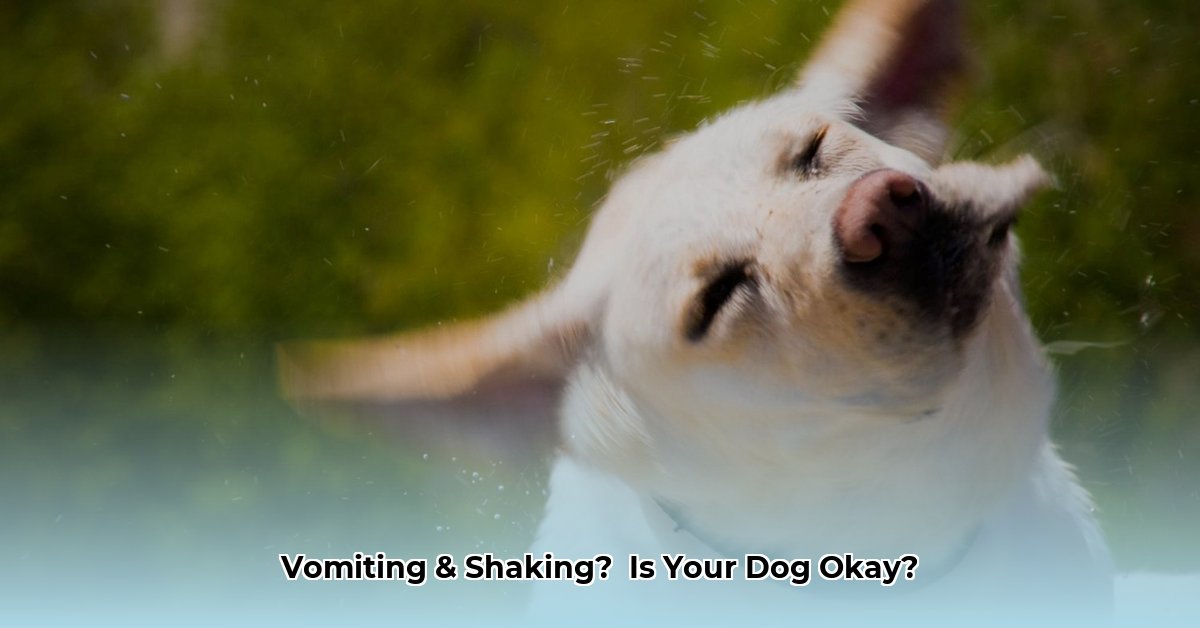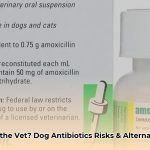Seeing your dog vomit and shake is understandably frightening. This comprehensive guide provides actionable advice and helps you determine the severity of the situation, guiding you on whether to monitor, call your vet, or seek immediate emergency care. This information is for informational purposes only and does not substitute professional veterinary advice.
Is My Dog’s Vomiting and Shaking an Emergency?
Just like a rumbling car engine can signal anything from a loose wire to a blown head gasket, vomiting and shaking in dogs can indicate a range of issues, from mild to life-threatening. Recognizing the severity is key.
Symptom Checker: First Steps for a Worried Pet Owner
This symptom checker will help you navigate the initial anxiety and determine the urgency of the situation. Remember, while this tool is helpful, it does not replace a professional veterinary diagnosis.
(Interactive Flowchart/Decision Tree would be placed here. This would be a visual guide with branching questions. Here’s a text-based example of how it could flow):
- Is your dog vomiting and shaking? Yes > Go to 2. No > Reassess symptoms, consult your vet if concerned.
- How frequently is your dog vomiting? Once > Go to 3. Multiple times > Go to 4.
- Are there any other symptoms (lethargy, blood in vomit, difficulty breathing, pale gums)? Yes > Call your vet immediately. No > Go to 5.
- Is the vomit bloody or does your dog have pale gums, difficulty breathing or a distended abdomen? Yes > Seek immediate emergency care. No > Call your vet immediately.
- Is your dog acting normally otherwise? Yes > Monitor closely, withhold food for 12 hours, offer small sips of water if tolerated, contact vet for advice. No > Call your vet.
Decoding the Symptoms: Possible Causes
Vomiting and shaking can stem from a variety of causes. Here’s a breakdown:
Mild Causes:
- Dietary Indiscretion: Perhaps your dog scavenged something they shouldn’t have. This is a common cause, especially in puppies.
- Stress and Anxiety: Just like us, dogs experience stress and anxiety, which can manifest as vomiting and shaking. Fireworks, thunderstorms, and changes in routine are common triggers.
- Motion Sickness: Some dogs are prone to motion sickness, especially during car rides.
Moderate to Severe Causes (Require Veterinary Attention):
- Infections: Bacterial, viral, or parasitic infections can disrupt a dog’s system, leading to vomiting and shaking. Parvovirus, a highly contagious viral disease, is a particular concern for puppies.
- Pancreatitis: Inflammation of the pancreas can cause significant discomfort and gastrointestinal upset. Certain breeds are predisposed to this condition.
- Metabolic Disorders: Conditions like kidney or liver disease can disrupt the body’s balance and lead to these symptoms.
- Medication Side Effects: Certain medications can cause vomiting and shaking as side effects. Always discuss any potential side effects with your vet.
Life-Threatening Causes (Require Immediate Emergency Care):
- Bloat (Gastric Dilatation-Volvulus or GDV): This is a rapidly progressing, life-threatening emergency, especially in large, deep-chested breeds. The stomach twists, cutting off blood supply. A swollen belly, unproductive retching (trying to vomit without producing anything), and restlessness are classic signs.
- Heatstroke: Dogs can overheat quickly, particularly in hot, humid weather. Rapid panting, weakness, collapse, bright red or blue gums, and seizures are warning signs.
- Toxin Ingestion: Many common household items are toxic to dogs, including chocolate, xylitol (artificial sweetener), grapes, raisins, and certain medications.
When to Rush to the Vet: Recognizing Red Flags
Don’t hesitate if you observe any of these critical signs:
- Bloody vomit (hematemesis)
- Pale or bluish gums
- Distended or painful abdomen
- Difficulty breathing (dyspnea)
- Collapse or unconsciousness
- Seizures or tremors lasting longer than 30 minutes
- Suspected toxin ingestion
Caring for Your Dog at Home (If Vet-Approved)
If your vet advises home monitoring after a single, uncomplicated vomiting episode:
- Withhold food for 12-24 hours: This gives the digestive system a chance to rest.
- Offer small amounts of ice chips or Pedialyte (not water initially): This helps prevent dehydration. Avoid water, especially if vomiting continues, as it can exacerbate the issue.
- Gradually reintroduce a bland diet: Boiled chicken and rice are good options.
Never induce vomiting unless directed by your vet, and never give human medications without veterinary approval.
Proactive Steps: Prevention is Key
Minimize risks with these proactive measures:
- Pet-proof your home: Secure medications, cleaning products, human food, and other potential hazards.
- Provide a balanced, high-quality diet: Consult your vet for dietary recommendations.
- Manage stress and anxiety: Create a safe and predictable environment for your dog. Consider behavioral training or calming aids if needed, always under veterinary guidance.
- Maintain regular veterinary checkups and vaccinations: Preventive care is vital for overall health.
Finding Emergency Veterinary Care
Knowing where to go in an emergency can save precious time. Research your local 24/7 emergency veterinary hospitals and save their contact information. The ASPCA Animal Poison Control Center (https://www.aspca.org/pet-care/animal-poison-control) is also an invaluable resource, especially in suspected poisoning cases.
Disclaimer: This information is for educational purposes only and is not a substitute for professional veterinary advice. Always consult a qualified veterinarian for any health concerns about your pet.
- Unpacking the Cost of Wellness Programs and Their Real Value - December 17, 2025
- How Much Do Wellness Programs Cost Businesses To Offer? - December 16, 2025
- Wellness Fair Ideas for Work to Boost Employee Wellbeing - December 15, 2025
















